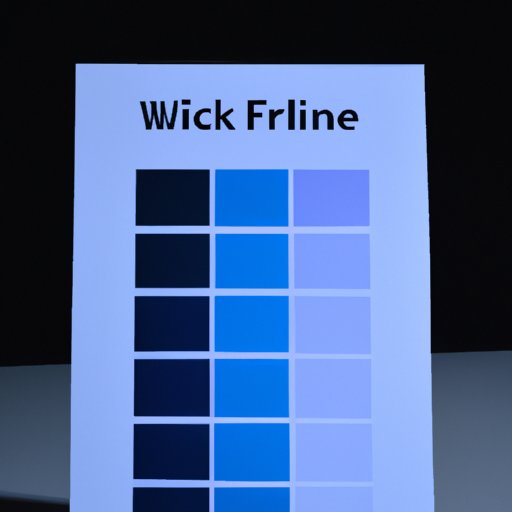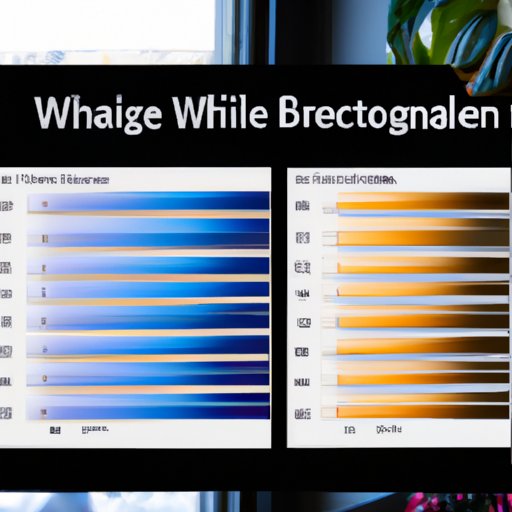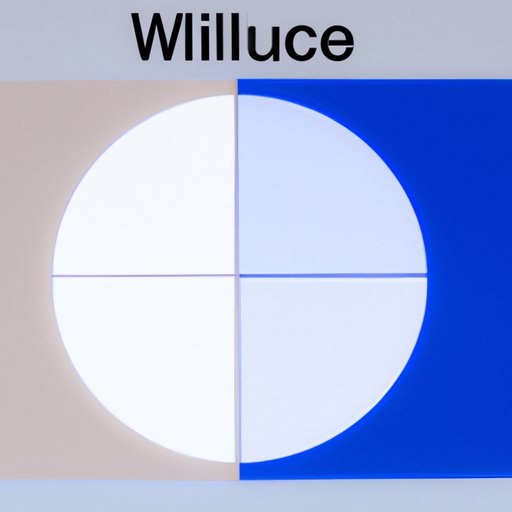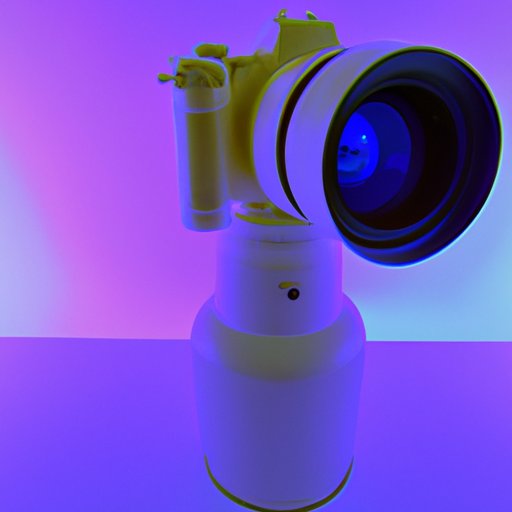Introduction
White balance is one of the most important elements of photography. It affects the overall look and feel of a photo by adjusting the colors to accurately reflect the light source in the scene. In this article, we will explore what white balance is, what it does, and how to use it to take beautiful, accurate photos.

Exploring the Basics of White Balance in Photography
To understand white balance, it’s important to first understand the concept of color temperature. Color temperature is a measure of the overall hue of a light source, expressed in degrees Kelvin (K). Natural sunlight has a color temperature of approximately 5500K, while indoor lighting is usually around 3200K. Different types of light sources have different color temperatures, which can affect the overall look and feel of a photo.
When shooting in auto white balance mode, the camera will automatically attempt to adjust the colors in the photo to match the light source. This helps ensure that the colors in the photo are accurate and true to life. However, auto white balance can sometimes be inaccurate, so it’s important to know how to manually adjust the white balance if needed.
In addition to auto white balance, there are several other white balance modes available on most cameras. These include daylight, cloudy, shade, flash, tungsten, fluorescent, and custom white balance. Each of these modes is designed for different lighting conditions and can help you achieve the desired look and feel for your photos.
A Beginner’s Guide to White Balance Adjustments
If you want to get the best results out of your photos, it’s important to learn how to make manual white balance adjustments. The easiest way to do this is to set a custom white balance. This involves taking a photo of a white or gray card under the same lighting conditions as your subject, then using the camera’s menu system to set the white balance to the values of the card. This ensures that the colors in your photos are accurate and true to life.
In addition to setting a custom white balance, you can also make simple white balance adjustments in-camera. Most cameras have a selection of preset white balance options, such as daylight, cloudy, shade, flash, tungsten, and fluorescent. You can also adjust the color temperature manually, which gives you more control over the colors in your photos.

How to Achieve the Perfect White Balance in Your Photos
Now that you know the basics of white balance, here are some tips for achieving the perfect white balance in your photos. First, always shoot in RAW format. This allows you to make non-destructive adjustments to the white balance in post-processing, giving you more flexibility and control over the final image.
Second, use a gray card or white balance card when shooting in difficult lighting conditions. This will help ensure that the colors in your photos are accurate and true to life. Finally, take some test shots with different white balance settings before committing to a particular setting. This will help you find the best white balance for the scene.
Advanced Techniques for White Balance Adjustment in Photography
Once you’ve mastered the basics of white balance, there are several advanced techniques you can use to further refine the colors in your photos. One such technique is using color filters to adjust white balance. This involves placing a colored filter over the lens to shift the colors in the scene. This can be used to warm up a photo or cool it down, depending on the type of filter used.
Another advanced technique is adjusting white balance with split neutral density filters. This involves using two different filters, one to darken the shadows and one to lighten the highlights. By combining the two, you can create a more balanced exposure and adjust the white balance to achieve the desired look and feel for your photos.

Creative Uses of White Balance to Enhance Your Photos
White balance isn’t just for making sure the colors in your photos are accurate. It can also be used to create dramatic effects and intriguing color palettes. For example, warming up a photo by shifting the white balance towards the red end of the spectrum can create a cozy, inviting atmosphere. On the other hand, cooling down a photo by shifting the white balance towards the blue end of the spectrum can create a stark, moody atmosphere.
You can also use white balance to create interesting color palettes. For instance, shifting the white balance towards the yellow end of the spectrum can produce an ethereal, dreamlike effect. Shifting towards the green end of the spectrum can produce a surreal, alien-like effect.
Conclusion
White balance is one of the most important elements of photography. It affects the overall look and feel of a photo by adjusting the colors to accurately reflect the light source in the scene. Understanding the basics of white balance, such as color temperature and different white balance modes, is key to mastering the craft of photography. With practice and experimentation, you can learn to use white balance to create stunning, accurate photos.
White balance can also be used creatively to create dramatic effects and intriguing color palettes. By learning how to use color filters and split neutral density filters to adjust white balance, you can unlock a whole new world of creative possibilities. Mastering white balance is an essential part of becoming a successful photographer.
(Note: Is this article not meeting your expectations? Do you have knowledge or insights to share? Unlock new opportunities and expand your reach by joining our authors team. Click Registration to join us and share your expertise with our readers.)
